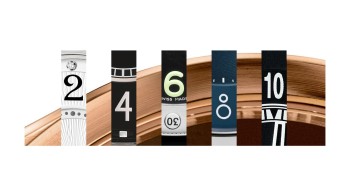I bet you couldn’t say how many times you look at your watch dial every day. But on any of those numerous occasions, have you ever taken the time for a detailed look? What sets it apart? Why do you like it? How is it indicative of the brand of the watch itself? When reviewing watches, I am usually guilty of the same level of superficiality, limiting myself to colours, overall harmony and legibility. At most I might differentiate between Arabic and Roman numerals or simple hour markers as the indicators used to decipher the information that the watch is aiming to provide us as its primary function.
Two articles that have recently featured on WorldTempus have taught me to look way beyond this when I’m considering the “face” of a watch. When you read the thoughts of Noémie Oulevay, a graphic designer who is specialised in typography, you suddenly start to look at the numbers on your watch in a completely different way. Are there serifs? Are the numbers evenly spaced, close together, distorted? You notice subtleties that set a particular design apart, like the distance between the two individual letters that make up the majority of Roman numerals on a dial. That’s when you understand you are used to seeing the identity of a brand’s design as a whole, without necessarily considering the role – sometimes a very important one – that the numbers play in this signature. Take the time and you can find numerous examples. Those from Hermès and Cartier may spring to mind more readily, but the typography used by many other brands can have an equally important impact.
I therefore wholeheartedly recommend a read of Noémie’s two articles, which are logically divided into two parts – Arabic and Roman numerals – for a better understanding of this often-overlooked design element. I would also like to thank Noémie for kindly allowing WorldTempus to reproduce these two articles.






